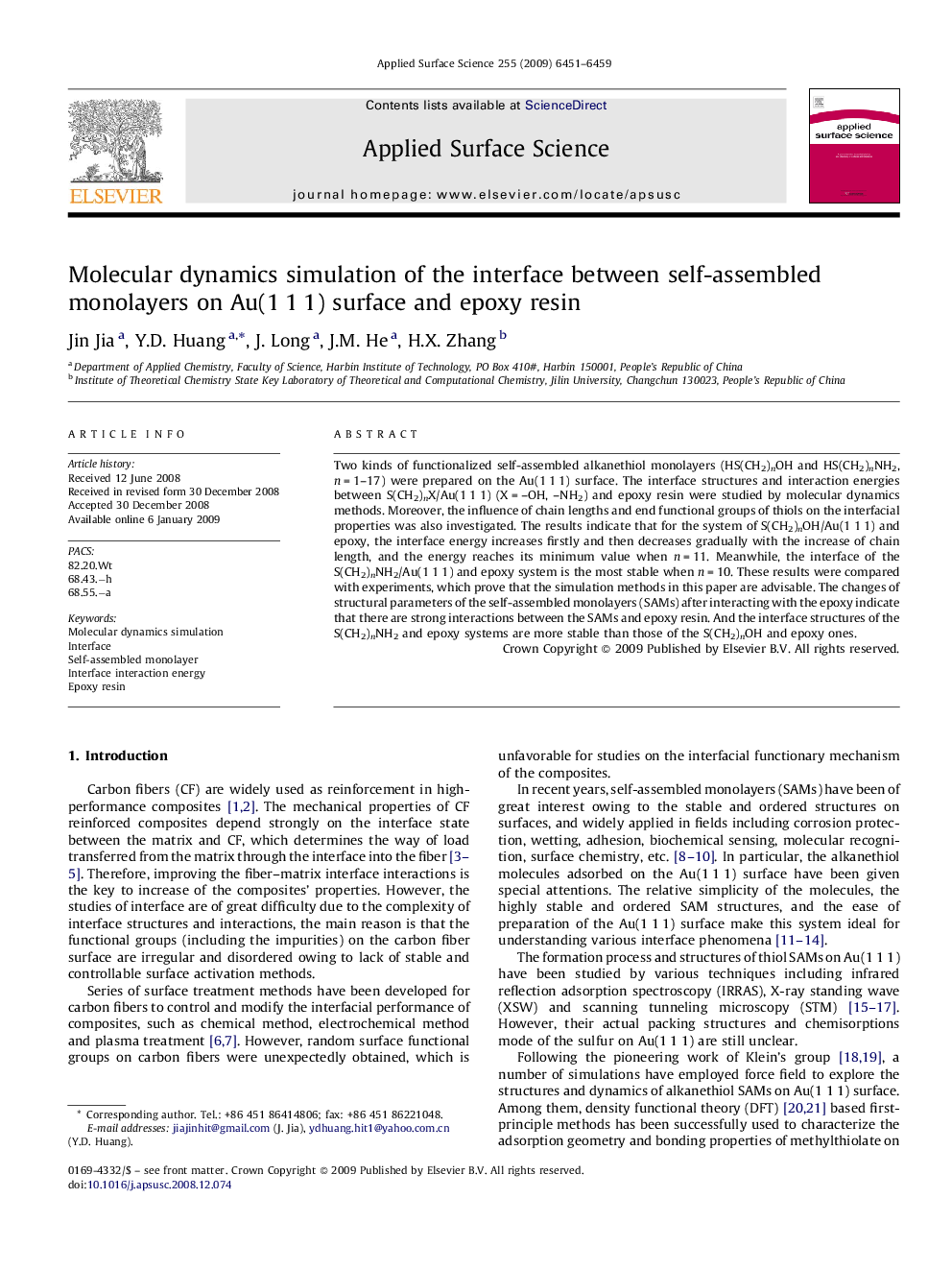| Article ID | Journal | Published Year | Pages | File Type |
|---|---|---|---|---|
| 5359768 | Applied Surface Science | 2009 | 9 Pages |
Abstract
Two kinds of functionalized self-assembled alkanethiol monolayers (HS(CH2)nOH and HS(CH2)nNH2, n = 1-17) were prepared on the Au(1 1 1) surface. The interface structures and interaction energies between S(CH2)nX/Au(1 1 1) (X = OH, NH2) and epoxy resin were studied by molecular dynamics methods. Moreover, the influence of chain lengths and end functional groups of thiols on the interfacial properties was also investigated. The results indicate that for the system of S(CH2)nOH/Au(1 1 1) and epoxy, the interface energy increases firstly and then decreases gradually with the increase of chain length, and the energy reaches its minimum value when n = 11. Meanwhile, the interface of the S(CH2)nNH2/Au(1 1 1) and epoxy system is the most stable when n = 10. These results were compared with experiments, which prove that the simulation methods in this paper are advisable. The changes of structural parameters of the self-assembled monolayers (SAMs) after interacting with the epoxy indicate that there are strong interactions between the SAMs and epoxy resin. And the interface structures of the S(CH2)nNH2 and epoxy systems are more stable than those of the S(CH2)nOH and epoxy ones.
Keywords
Related Topics
Physical Sciences and Engineering
Chemistry
Physical and Theoretical Chemistry
Authors
Jin Jia, Y.D. Huang, J. Long, J.M. He, H.X. Zhang,
